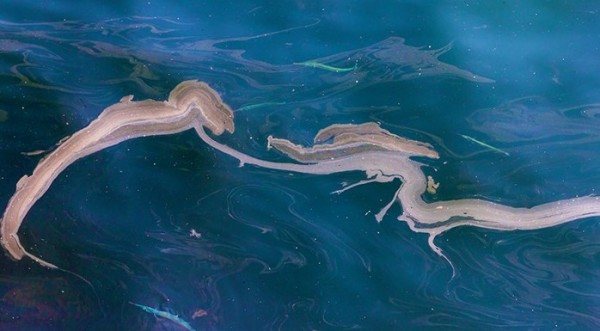The Maritime Safety Forum has investigated an incident in which, a Platform Supply Vessel reported having a fuel spill while loading fuel in port. However, upon discovering the spill, the job was immediately stopped and clean up actions initiated.
During the morning the vessels crew had been using a ‘jumper hose’ to discharge ‘old’ fresh water overboard using the aft starboard manifold with the plan being to refresh the water tanks later in the day.
As is common with this type of operation while the water pump is running all water manifolds in the system are under pressure and this included the port midships water manifold. Unfortunately, the port midships manifold had a leaking valve which was allowing fresh water to pass through and out into the port midships drip tray which in turn was filling up the port side drip tray and safe-haven with fresh water.
As the morning progressed a fuel bunkering check list was completed and the vessel started bunkering fuel through the port midships manifold, an AB was in place to watch the fuel hose and check for any leaks.
After approximately an hour bunkering the AB / watchman reported smelling fuel and although he couldn’t see where it was leaking from he initiated emergency stop and informed the shore side to stop pumping. He then looked overboard and saw fuel in the water between the vessel and quayside. SOPEP equipment was deployed and booms put in place around the vessel to contain the fuel.
Findings
The investigation revealed that during the bunkering process fuel had been leaking from the fuel sample/ drain cock (which is
attached to the fuel manifold for the purpose of allowing fuel samples to be taken during fuel discharges) into the drip tray and draining overboard along with the fresh water originating from the water manifold.
Factors
1. The leaking fresh water manifold valve. The leak from this manifold allowed the drip tray and safe-haven save all’s to fill up with water which in turn meant the fuel escaping from the sample/drain cock lay on top of the water and hence spilled overboard.
2. Failure to fully ensure the requirements of the ‘pre bunkering’ check list were met. Despite the completion of a ‘pre bunkering’ check list the requirements of the check list were not fully met and complied with, this included failing to ensure the scuppers were properly plugged, (I.e. the fuel loading check list required ‘Drip trays around bunkering connections to be empty and oil tight’.) It was found that the drip tray had water in it, the drip tray plug was missing.
3. Although a watchman was in place there was a failing to maintain a proper watch on all areas where fuel could possibly leak
from.
Actions Taken
• A time out for safety (TOFS) meeting was held on board. Items discussed included an overview of how the incident occurred and a reminder to ensure check lists are not only completed but also correctly complied with, in particular paying attention to detail (I.e. the fuel loading check list required ‘Drip trays around bunkering connections to be empty and oil tight’). Note: It was found that the drip tray had water in it and the drip tray plug was missing.
• The Positioning of watchmen during bunker transfer operations was reviewed to ensure that all areas where leaks could originate from are regularly checked.
• The port midships fresh water manifold valve was immediately repaired and made water tight.
• The fuel manifold drain cock was repaired thus ensuring fuel could not escape from it again.
• This incident involved 2 x defective valves on different bulk cargo transfer systems. Correct and proper maintenance on all line valves and pumping systems was reviewed to ensure that pollution/cross contamination and such like could not re-occur.
Further details may be found in the report herebelow
Source: Maritime Safety Forum
































































